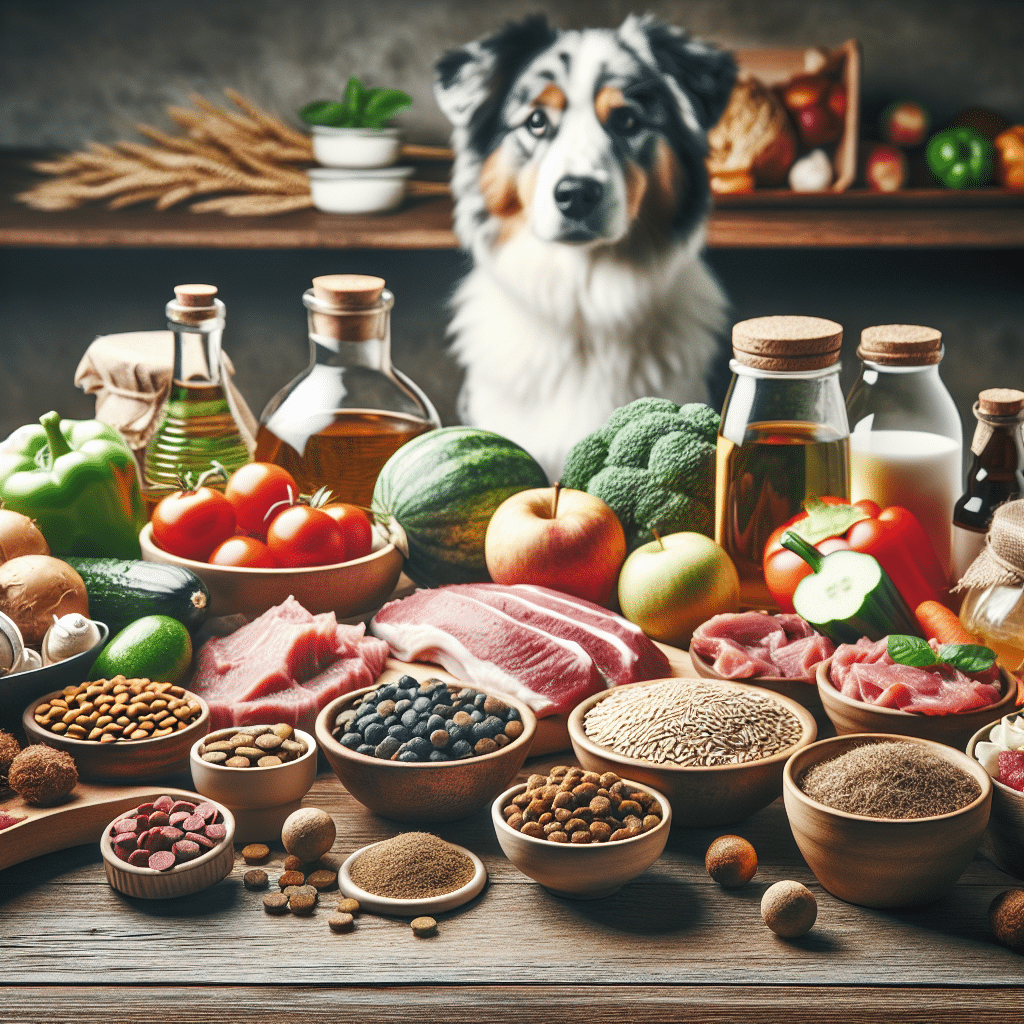Understanding Balanced Dog Food
Creating balanced dog food recipes at home requires understanding what nutrients your canine companion needs. A well-rounded diet must include proteins, carbohydrates, fats, vitamins, and minerals. Proteins serve as the building blocks for muscles and tissues, while carbohydrates provide energy. Healthy fats support skin and coat health, while vitamins and minerals are essential for overall wellness.
Key Ingredients for Balanced Dog Food
-
Proteins
Look for high-quality protein sources such as chicken, beef, turkey, lamb, fish, and eggs. These options provide necessary amino acids for muscle development, immune function, and overall health. -
Carbohydrates
Whole grains like brown rice, oats, and barley are excellent sources of carbohydrates, providing energy and fiber. Sweet potatoes, peas, and legumes offer complex carbohydrates and are rich in antioxidants. -
Fats
Healthy fats are essential for your dog’s skin and coat health. Options include fish oil, flaxseed oil, and chicken fat, which also support proper brain function and reduce inflammation. -
Fruits and Vegetables
Incorporating fruits and vegetables provides essential vitamins, minerals, and fiber. Safe choices include carrots, green beans, spinach, blueberries, and apples (remove the seeds). -
Supplements
While whole foods typically provide essential nutrients, some dogs may require supplements. Omega-3 fatty acids, probiotics, and multivitamins can enhance the nutritional profile of your dog’s diet.
Homemade Dog Food Recipes
Recipe 1: Chicken and Rice Dog Food
Ingredients:
- 2 ½ cups of brown rice
- 1 ½ pounds of ground chicken
- 1 cup of carrots, chopped
- ½ cup of peas, canned or frozen
- 3 cups of water
Instructions:
- In a large pot, bring water to a boil.
- Add brown rice and boil for about 20 minutes or until fully cooked.
- In another pan, cook the ground chicken until no longer pink.
- Add carrots and peas to the chicken, cooking for an additional 5 minutes.
- Stir in the rice, combine thoroughly, and let it cool before serving.
Recipe 2: Beef and Vegetable Stew
Ingredients:
- 1 pound of ground beef
- 1 cup of carrots, diced
- 1 cup of green beans, chopped
- 1 cup of potatoes, diced (with skin)
- 4 cups of beef broth
Instructions:
- Brown the ground beef in a large pot over medium heat, draining the fat as necessary.
- Add the carrots, green beans, and potatoes to the pot.
- Pour in the beef broth and bring to a boil.
- Reduce heat and simmer for 30 minutes, stirring occasionally.
- Allow cooling before serving.
Recipe 3: Salmon and Sweet Potato Delight
Ingredients:
- 1 can of salmon in water (with bones)
- 1 medium sweet potato, cooked and mashed
- ½ cup of spinach, chopped
- 1 tablespoon of flaxseed oil
Instructions:
- In a bowl, combine the drained salmon, mashed sweet potato, chopped spinach, and flaxseed oil.
- Mix thoroughly until all ingredients are well integrated.
- Serve once cool, ensuring the mixture is at a safe temperature for your dog.
Nutritional Considerations
- Portion Control: Ensure you are feeding your dog the right amount based on their size and activity level. Consult with your veterinarian for specific guidelines.
- Transition Gradually: When switching to homemade food, introduce it slowly to avoid gastrointestinal upset. Start with 25% new food mixed with 75% old food, gradually increasing the proportion of the new food over a week.
- Monitor Your Dog’s Health: Pay attention to your dog’s energy levels, coat condition, and stools after making dietary changes. Any significant changes may warrant a discussion with your vet.
Storing Homemade Dog Food
Proper storage is vital for maintaining the freshness of homemade dog food. Store batches in airtight containers in the refrigerator for up to 3-4 days. For longer preservation, consider freezing portions. Use freezer-safe containers, and defrost portions in the refrigerator before serving.
Common Mistakes to Avoid
- Ignoring Proteins: Your dog’s diet should predominantly consist of high-quality proteins; neglecting this can lead to deficiencies.
- Excessive Treats: Even with healthy ingredients, too many treats can lead to obesity and nutritional imbalances.
- Inadequate Variety: Dogs need a mix of nutrients; a single recipe might not cover all their needs.
- Forgetting To Include Bone Meal: To provide calcium, consider adding ground bone meal to recipes, especially for growing puppies or pregnant dogs.
- Not Consulting a Veterinarian: Always check in with a vet before making significant dietary changes to ensure they are appropriate for your dog’s unique needs.
Final Notes on Homemade Dog Food
Making balanced dog food at home is an enriching experience that allows you to control the quality and sources of your pet’s diet. With a careful approach to ingredient selection and proportions, you can craft meals that are not only nutritious but also delicious for your furry family member. Regular vet consultations can help ensure that your dog remains healthy and happy on their homemade diet. Engaging with your local community or online forums can provide further support, ideas, and inspiration as you embark on your journey into homemade dog food. Crafting meals with love will surely reflect positively on your canine’s well-being.
